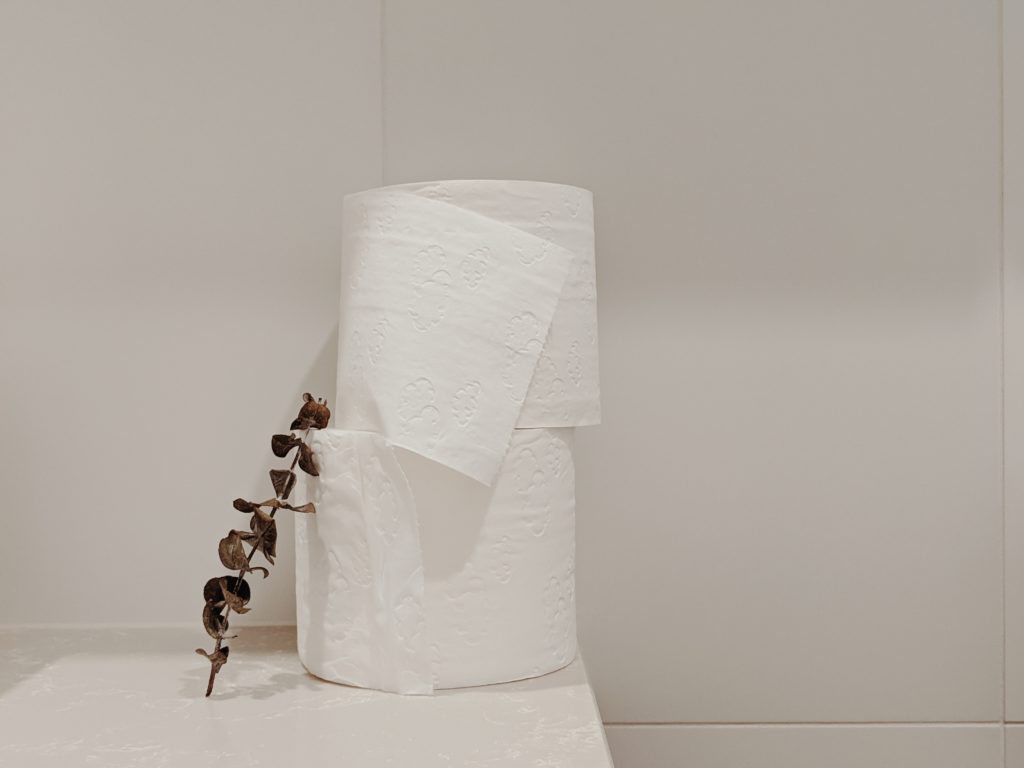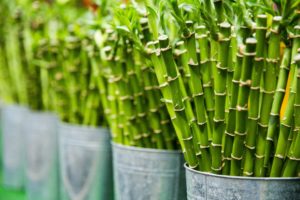More and more so today, we find that there is an increased need for us to pay attention to the products we use. Many of us are aware of how fundamental items that make our lives more convenient can have detrimental consequences on the environment. Some of these consequences may not be immediate or directly affect our own lives. However, we still have a responsibility to gain an understanding of our disposable product use — even when it comes to our bathrooms.
One of the products that is likely to have the most impact in terms of sustainability and sanitation is toilet paper. We use a lot of it. According to one estimate, the average family in the U.S. requires around 409 regular-sized rolls per year. This huge amount of paper gets flushed away into our water systems and out into nature. Just sitting around, it has the potential to cause problems on our own property as well as to the planet. This is why biodegradable toilet paper has become an important consideration for all families. Let’s take a closer look at what it is and what our options are.

What Is Biodegradable Toilet Paper?
Firstly, it’s worth noting that almost all toilet paper is biodegradable. This is because it’s created from natural materials, as the pulp is made from 70% hardwood and 30% softwood. If left to its own devices, this paper will gradually break down over time and become decomposed by bacteria. That said, not all toilet paper breaks down at the same rate. When a manufacturer advertises their product as biodegradable toilet paper, this usually means that it is designed to dissolve more quickly than the usual types.
Why is biodegradable toilet paper different?
The differences between regular toilet paper and biodegradable toilet paper go beyond just clever, environmentally-targeted branding. In order to create a product that dissolves quickly and uses less water to do so, you need to place focus on raw materials that are naturally predisposed to break down. As a result, alongside traditional wooden materials, this paper is often created from these materials:

- Bamboo. One of the most versatile natural materials available to us, bamboo is increasingly being used for paper products. It’s a grass, rather than the usual wood, and its fibrous nature makes it ideal for swift decomposition. The process used to make it into toilet paper doesn’t involve chemicals, so when it breaks down, it doesn’t have a damaging effect on the environment. As bamboo is quick to regrow, it doesn’t result in mass deforestation during harvesting, making it one of the most sustainable materials available.

- Hemp. Much like bamboo, hemp’s ultra-fine fibers make this plant perfect for production and decomposition of biodegradable toilet paper. In fact, almost all products made from hemp — including plastic — have swift biodegradable properties. As the plant also has naturally low lignin levels, it requires fewer chemicals to transform it into a pulp that can be used for paper. Again, it’s rapid regrowth makes it a sustainable product. It regrows in 20 weeks as opposed to the 20 years it takes most trees used in toilet paper production to grow.

- Sugar Cane. The material needed to make biodegradable toilet paper is actually harvested from the waste created by sugar processing. Known as bagasse, once the juice is extracted from the cane, the remainder can be crushed down and pulped to press into paper sheets. The short fibers from the sugar cane stalk help to make this a strong but easily dissolving paper product that doesn’t require a lot of water to deteriorate.
Why is biodegradable toilet paper good for your septic system?
As considerate homeowners, we all want to make sure that the waste systems we share are functioning correctly. However, those of us that have our own septic tanks have even more reason to ensure we choose the right paper products. Every time you flush your toilet, the paper travels through the collection of pipes and settles in your septic tank. There are ample opportunities for toilet paper to become caught and congeal in the pipes, potentially resulting in blockages. Inside the septic tank, the paper, along with natural waste, turns into a sludge that builds up over time. The longer this paper takes to break down, the more volume it takes up in your tank, and the more often you’ll need to have it emptied.
By choosing biodegradable toilet paper, even waste that gets caught in the U-bend can be cleared away easily with a few extra flushes or some boiling water. In fact, as it tends to break down into smaller pieces once water is applied, there is less opportunity for large amounts of paper to gather into the clumps that can cause blockages in the first place. This also means that once it reaches your septic tank, it will be broken down by bacteria much more swiftly than other types of toilet paper, resulting in the tank becoming full less often.
How Should You Use Biodegradable Toilet Paper?
Okay, we’re going to admit that this is a question that could result in some sarcastic responses. Don’t worry, we’re not going to get into the mechanics of toilet paper operations. That said, manufacturers have created more than just one single type of biodegradable toilet paper. Each tends to be more suited to a specific type of environment, usage, and disposal.
We’re going to take a look at a few of the key areas along with a couple of the popular products that have been highly rated.
In the Home
The home is likely to be the place most of us will be using the most toilet paper. This is important to note because it also means that there is a greater potential for blockages that could lead to toilet repairs or more frequent emptying of the septic tank. For home use, manufacturers also often take into account that their paper will likely be used by family members of all ages who may have skin sensitivities and health conditions. Not to mention that we don’t just use toilet paper for the traditional toilet functions, as there may be some that use it for nose blowing or makeup removal as well. As such, you’re more likely to see biodegradable toilet paper that is hypoallergenic.
Seventh Generation Bathroom Tissue
The manufacturer of this biodegradable toilet paper has spent the last 30 years designing products that are better for both the home and the environment. It is intended to put less pressure on septic systems, and it is made without chemicals or bleaches that can harm the soil once it degrades and seeps into the ground. This is also a hypoallergenic product, and it is constructed as 2-ply to ensure softness for sensitive skin.
- Designed to be suitable for sensitive skin
- Made from recycled, sustainable materials
- Septic safe
- Only available in the U.S.
- Some users have reported inconsistent paper quality


Angel Soft Toilet Paper
Angel Soft toilet paper has become one of the most popular brands of biodegradable toilet paper on the market for home use. Unusually, it’s not made from the common biodegradable materials, but rather it is manufactured using processes that don’t use additives and chemicals. This helps ensure that the paper breaks down swiftly and prevents pipe and septic tank clogging.
- Designed to be suitable for sensitive skin
- Packaging is also biodegradable
- Strong, yet still breaks apart when water is applied
- Not made from sustainable products
- Thinner than similar brands
On the Move
When you’re taking a long-haul trip, knowing you have reliable bathroom facilities can bring some peace of mind. Toilets on recreational vehicles (RVs), boats, and even your camping portajohn are limited in their septic capacity. As a result, you have to make smart choices when it comes to what you flush. Some people have begun avoiding paper altogether, adopting the use of travel bidets. However, if you’re going to opt for a more traditional bathroom experience, manufacturers have created biodegradable toilet paper that is specifically designed to break apart easily inside portable waste systems, preventing the potential for problems and decreasing the need to empty while on the move.
Scott Rapid Dissolving Toilet Paper
The Scott brand of RV and marine biodegradable toilet paper consistently makes the list of popular and reliable sanitation products. It’s designed to dissolve four times faster than regular toilet tissue, and despite its 1-ply format, it manages to retain strength. It’s also worth noting that it is Forest Stewardship Council-certified and endorsed by the World Wildlife Fund, making it a good choice for sustainability too.
- Dissolves 4 times faster than regular paper
- No chemicals and fragrances makes it suitable for sensitive skin
- Septic-friendly
- More expensive than other brands
- Smaller rolls may not be suitable for families

Thetford RV & Marine Toilet Tissue

This biodegradable toilet tissue benefits from the fact that the manufacturer, Thetford, also makes portable camping toilets and septic systems. Therefore, consumers can be relatively certain that the product is designed to be suitable for mobile plumbing circumstances. Its 1-ply format helps to support the material’s natural ability to break down rapidly, ensuring that there is less chance of blockage. It’s also manufactured to be smaller than your average roll to save space.
- Designed to dissolve quickly
- Created by RV and Marine toilet manufacturer
- Made in a portable size
- 1-ply nature may limit strength of product
- Smaller rolls may not be suitable for families
For Sustainability
While biodegradable toilet paper is excellent for septic systems and can avoid the need for blockages or investing in powerful flushing toilets, it has a deeper role. The fact that it is designed to dissolve with little water and no chemicals reduces the potential for it to detrimentally affect our environment. As a result, families that are trying to take meaningful steps and change how their day-to-day living affects the planet should consider adopting different paper products. This is vital not only from the perspective of excessive waste production but also because it reduces the pressure on ecosystems by utilizing sustainable materials. Making the simple switch to biodegradable toilet paper can be responsible on multiple levels.

Betterway Organic Bamboo Toilet Paper
There are various environmentally-targeted biodegradable toilet paper brands emerging into the market at the moment. Alongside utilizing the sustainable bamboo raw material, the manufacturers of Betterway have placed some focus on mimicking the comfort consumers get from softer, less eco-friendly products. Despite being 3-ply, it is septic safe and rapidly dissolves. For additional sustainability, it is packaged with recycled paper and cardboard, rather than plastic.
- Made from sustainable bamboo material
- Septic-safe
- Hypoallergenic and made without chemicals
- More expensive than many brands
Freedom Living Toilet Paper


Sometimes it’s important to note that just because biodegradable toilet paper doesn’t come with “organic” branding, this doesn’t mean that you’re not living sustainably. Freedom Living paper is a good case in point. It has been designed without chemicals and immediately dissolves upon contact with water, making septic safe and preventing any potential harm to the environment. It has also been designed for use in portable composting toilets. Remember that sustainability doesn’t begin and end at home, but rather wherever we are in the world.
- Immediately dissolves on water contact
- Septic-safe
- Made without chemicals
- Not the strongest paper on the market
Why Should You Use Biodegradable Toilet Paper?
For most of us, the choice of which toilet paper we use will likely come down to comfort. We want to make certain that it will do the job without causing a mess, hassle, or any damage to our family’s skin. However, for conscientious homeowners, biodegradable toilet paper offers positive attributes.
Including:
- Septic Safety. It doesn’t clog in pipes or gather in your septic tank, taking up space. By dissolving faster than normal toilet paper, there’s a lower risk of blockage and less need to empty the tank.
- Good Raw Materials. Some brands on the market opt to use bamboo, hemp, or sugar cane as their source product. These are naturally well suited for both strength and rapid breakdown.
- Chemical-Free Process. The majority of biodegradable toilet paper is made without chemicals that are found in the usual manufacturing process. As a result, it is both suitable for sensitive skin and good for the environment.
- Eco-Friendly Product. Biodegradable toilet paper is often created from products that rapidly regrow, putting less pressure on global ecosystems. Its rapidly dissolving nature also means there is less chance for waste paper to gather in waterways, treatment areas, and landfills.
This is not to say that it’s all plain sailing. It can sometimes be difficult to find the right brand that bridges the gap between quickly dissolving and having strength during use. Biodegradable toilet paper is also renowned for being more expensive than other types. In the end, your decision needs to come down to where your priorities for your home, family, and budget lie.






